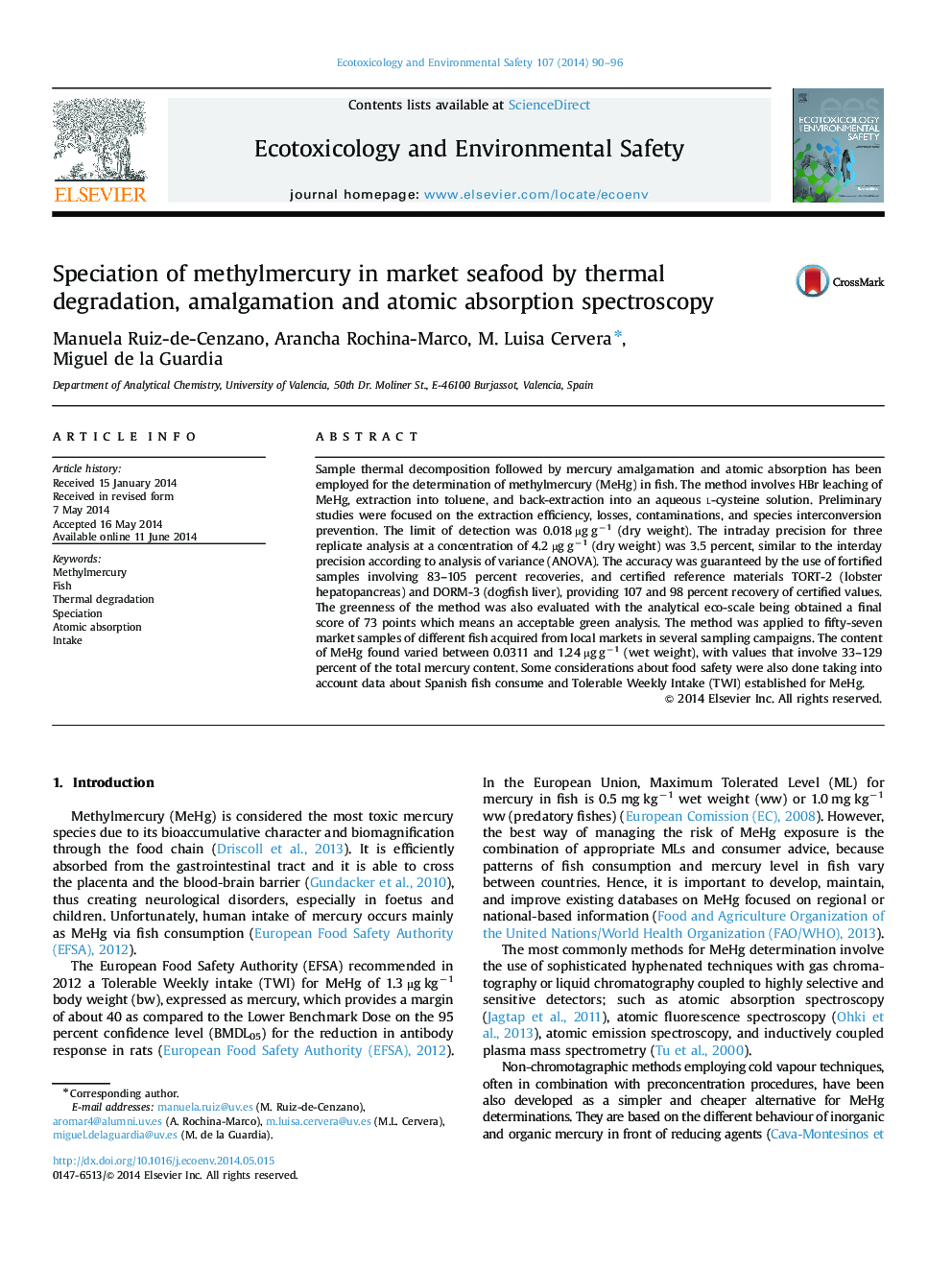| Article ID | Journal | Published Year | Pages | File Type |
|---|---|---|---|---|
| 4419972 | Ecotoxicology and Environmental Safety | 2014 | 7 Pages |
•MeHg was extracted and separated with HBr, toluene and l-cysteine solution.•Thermal degradation, amalgamation and atomic absorption provided accurate results.•Fifty-seven fish samples analysis resulted in 0.031–1.24 MeHg mg kg−1 wet weight.•In most of samples 90 percent of total Hg contained in fish was actually present as MeHg.•MeHg Tolerable Intake might be exceeded by excessive consumers of predatory fishes.
Sample thermal decomposition followed by mercury amalgamation and atomic absorption has been employed for the determination of methylmercury (MeHg) in fish. The method involves HBr leaching of MeHg, extraction into toluene, and back-extraction into an aqueous l-cysteine solution. Preliminary studies were focused on the extraction efficiency, losses, contaminations, and species interconversion prevention. The limit of detection was 0.018 µg g−1 (dry weight). The intraday precision for three replicate analysis at a concentration of 4.2 µg g−1 (dry weight) was 3.5 percent, similar to the interday precision according to analysis of variance (ANOVA). The accuracy was guaranteed by the use of fortified samples involving 83–105 percent recoveries, and certified reference materials TORT-2 (lobster hepatopancreas) and DORM-3 (dogfish liver), providing 107 and 98 percent recovery of certified values. The greenness of the method was also evaluated with the analytical eco-scale being obtained a final score of 73 points which means an acceptable green analysis. The method was applied to fifty-seven market samples of different fish acquired from local markets in several sampling campaigns. The content of MeHg found varied between 0.0311 and 1.24 µg g−1 (wet weight), with values that involve 33–129 percent of the total mercury content. Some considerations about food safety were also done taking into account data about Spanish fish consume and Tolerable Weekly Intake (TWI) established for MeHg.
Graphical abstractFigure optionsDownload full-size imageDownload as PowerPoint slide
